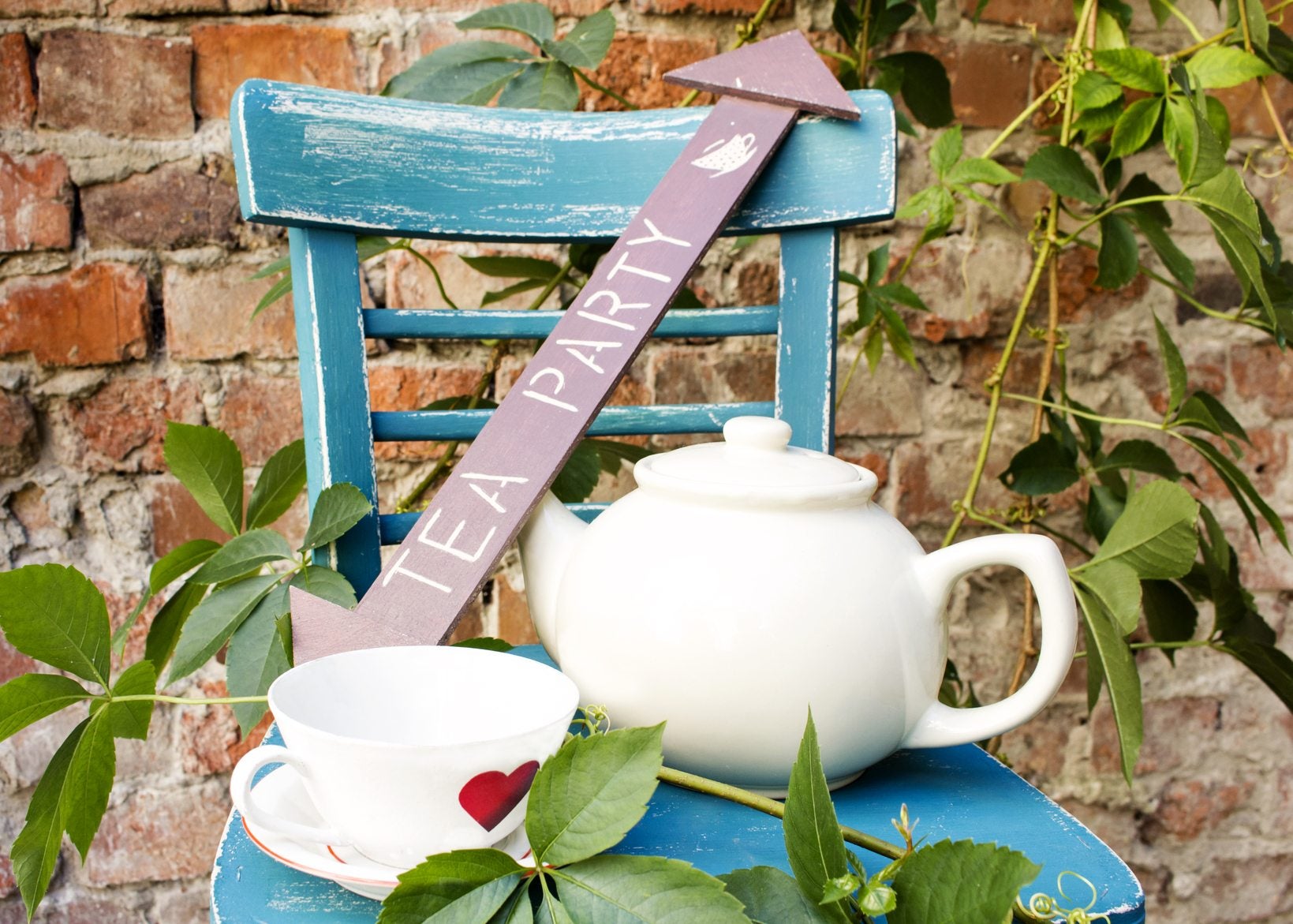Storybook Garden Tips For Kids: How To Create An Alice In Wonderland Garden

Whether you’re a big kid or have children of your own, creating an Alice in Wonderland garden is a fun, whimsical way to landscape the garden. If unsure about how to create an Alice in Wonderland garden, begin by rereading the book in its entirety to get your creative juices flowing and your head dancing with Alice in Wonderland garden ideas. Call it pleasurable research.
Alice in Wonderland Storybook Garden Tips
There’s a lot of ground to cover in Alice in Wonderland, all of it more fantastical than the previous. Things that stand out are the various sizes Alice goes through, one minute little and the next enormous. Then there’s the Mad Hatter’s tea party and guests, the white rabbit and his obsession with time, and the landscape within the story-- sometimes English garden pretty and sometimes loud with bold colors and quirky shapes. When considering Alice in Wonderland garden ideas, you may want to compare both plants and unusual garden art reminiscent of Alice’s world. For instance, pathways, doors, or archways lead one off into secret gardens that mirror scenes from the beloved story. Lighting to highlight certain plants or areas also keeps the garden feeling dreamy.
How to Create an Alice in Wonderland Garden
Choose plants that have radically different sizes and brilliant colors when creating an Alice in Wonderland garden. Dinner-plate hibiscus or dahlia flowers with blossoms that can be 10 to 12 inches (25-31 cm.) across are perfect and come in brilliant colors. Some clematis varieties also have blooms that are inordinately large and make quite a statement, as well as making for a lovely bower. No English garden would be complete without roses and with their wide array of colors and sizes to choose from, making perfect additions to Alice’s garden. If roses are a little tame and you want something that is more out of this world, add prickly caterpillar beans with their purple and white striping punctuated by spines. Maypop or passionflower is another bloom worthy of a fantasy garden. Parrot tulips, with their ruffled petals and myriad colors, work well in a storybook garden, as does the brilliantly blue honeywort. Purple allium with large puffy, purple heads is another quirky plant to add to the storybook garden. Snakes head fritillaria not only has a fabulous name but its unique flowers, with their checkerboard pattern, fit in beautifully in the fantasy garden. If you live in a warm region, try adding some tropical flora like pink banana to your surrealistic garden. The only limits to creating Alice’s garden are your imagination and USDA zone. As mentioned above regarding storybook garden tips, add some garden art, lighting, doors, paths, and even water features. Scour secondhand shops, garage sales, and swap meets and find something that tickles your fancy. It doesn’t have to be in perfect shape and a little paint always goes a long way. Keep in mind some of the key elements of the story when selecting. For example, all of the following are major players in Alice’s story:
- Teacups and tea pots
- Mushrooms
- Caterpillars
- Rabbits
- Pink flamingos
- Clocks
- Playing cards
It wouldn’t be surprising that once you dive into the rabbit hole with Alice, you will become so enchanted that you may never stop adding to your storybook garden.
Gardening tips, videos, info and more delivered right to your inbox!
Sign up for the Gardening Know How newsletter today and receive a free copy of our e-book "How to Grow Delicious Tomatoes".

Amy Grant has been gardening for 30 years and writing for 15. A professional chef and caterer, Amy's area of expertise is culinary gardening.
-
 Looking For Plants To Give You The Soft And Fuzzies? Try These 5 Fuzzy Leaf Plant Options
Looking For Plants To Give You The Soft And Fuzzies? Try These 5 Fuzzy Leaf Plant OptionsLovers of texture, drama, silver foliage and tactile plants will adore these special sensory garden additions. These fuzzy leaf plant options will leave you all aglow
By Susan Albert
-
 Get Ready For A Summer Of Hummers! Grow These Full Sun Hummingbird Plants and Flowers
Get Ready For A Summer Of Hummers! Grow These Full Sun Hummingbird Plants and FlowersIf you’re lucky enough to enjoy a sunny backyard, make sure you are maxing out on your pollinator opportunities and grow these full sun hummingbird plants and flowers
By Tonya Barnett